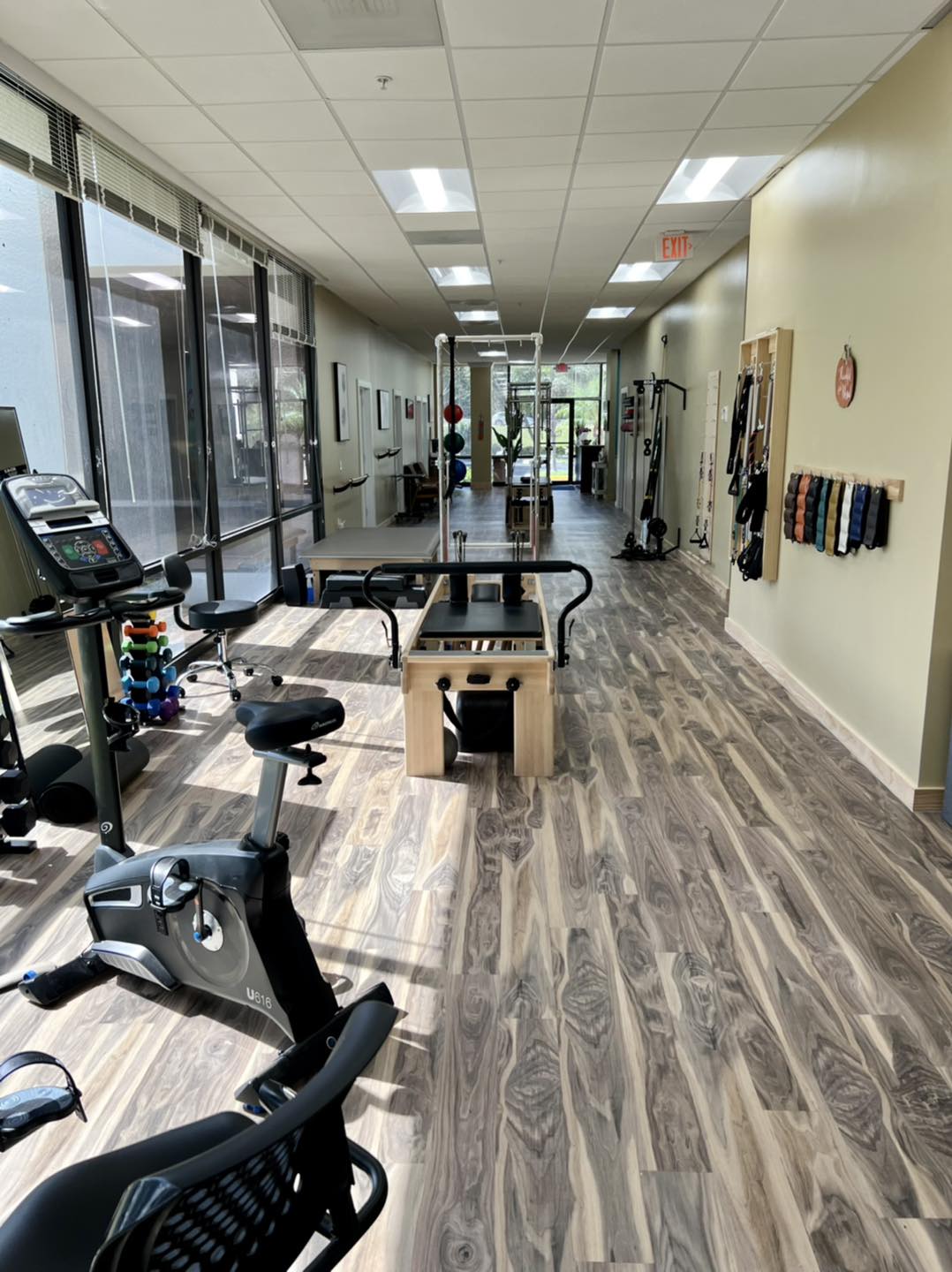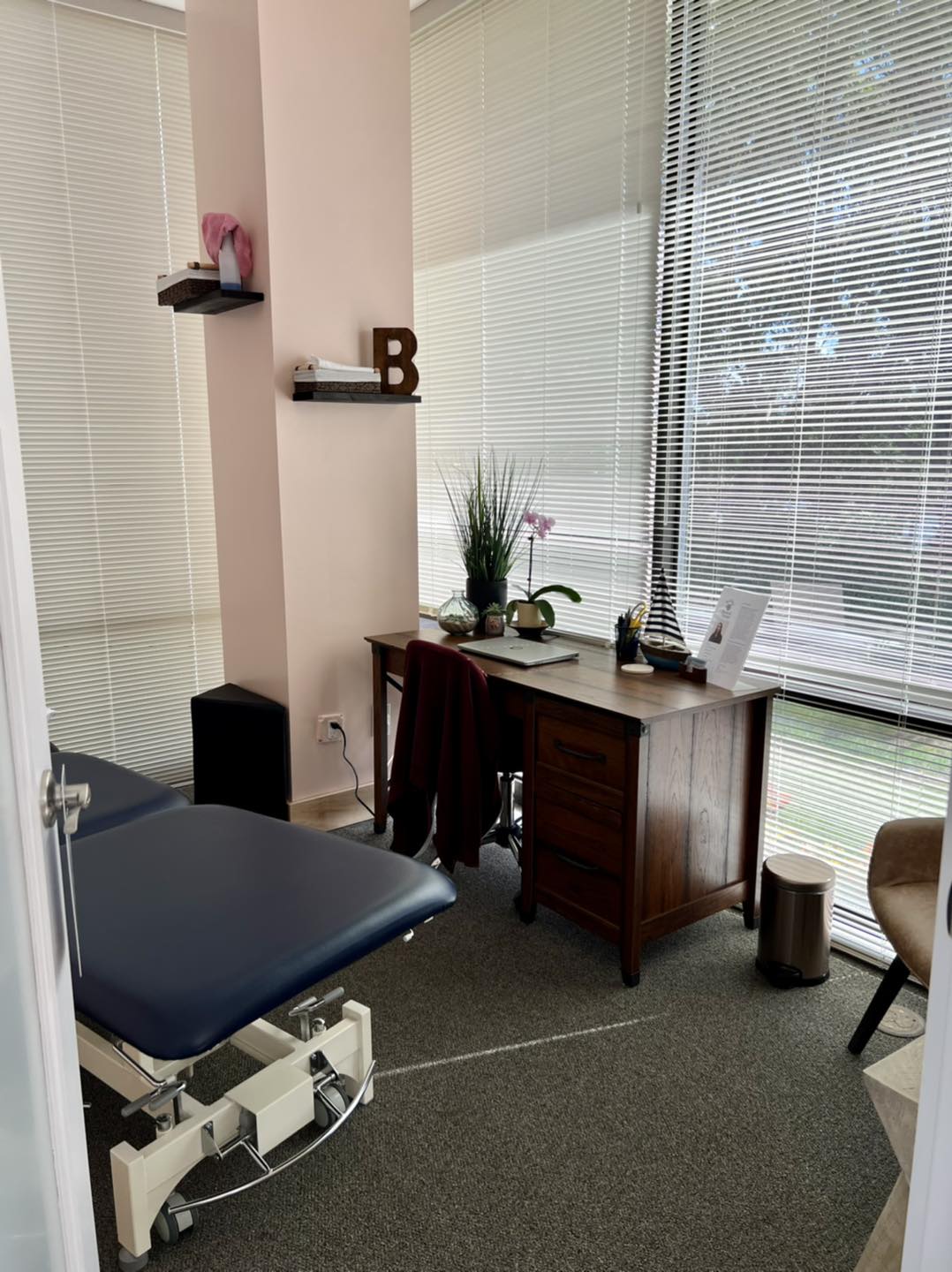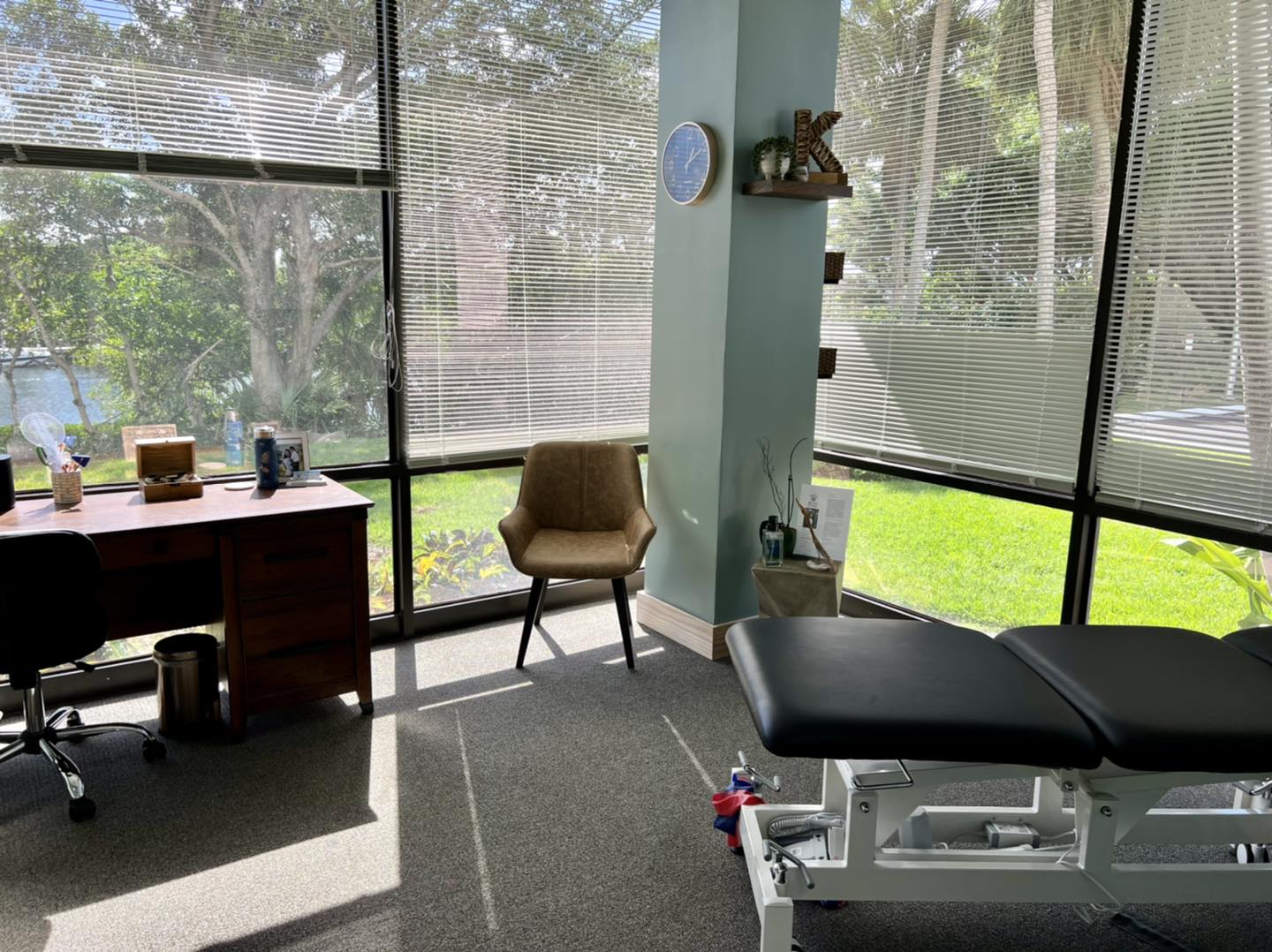Saylor PT Wellington
561-429-5127
Saylor Physical Therapy Wellington
Foot and
ankle pain
Foot & Ankle Pain Therapy at Saylor Physical Therapy Wellington
The foot is the foundation of movements of the lower extremity. The foot is an elaborate structure of 24 bones that form two crossing arches of the foot. Pain indicates that there is something wrong with either the interaction of internal structures of the foot or with the how the foot is interacting with external influences.
When there is pain, the body compensates by changing the way it moves or functions in an effort to reduce the pain. Foot pain may be caused by many different conditions or injuries. Acute or repeated trauma, disease, or a combination are the most common causes of foot pain. Other common foot ailments include tendonitis, heel spurs, plantar fasciitis, sprains and strains, fractures and arthritis.
The ankle is a “hinged” joint formed by the meeting of three bones, the tibia, fibula and the talus. The bony knobs on each side of the ankle called the malleoli which function as weight-bearing joints for the body during standing and walking. The ankle is capable of moving the foot in two primary directions: away from the body and toward the body and is an essential component for healthy movement of the foot.
Injuries to the ankle can affect a person’s gait, and cause strain to other areas of the body because of the body’s natural reaction to compensate for injury. The most common ankle injury is a sprain and the severity can range from mild (which can resolve within 24 hours) to severe (which can require surgical repair.)
We can help you with your foot and ankle pain.


Foot and Ankle Therapy in Wellington
Schedule an appointment and we look forward to providing you with quality, individual, one-on-one care for one full hour.
Foot and Ankle Pain Issues:
- Ankle Sprains / Instability
- Plantar Fasciitis
- Foot and Ankle Fractures
- Achilles Tendon Rupture
- Heel Spurs
- Peripheral Neuropathy
- Achilles Tendonitis/Tendinosis
Foot and Ankle Pain Symptoms
Depending on the cause and severity, pain can cause an array of symptoms. It may:
- Be dull, burning or sharp.
- Be localized or dispersed over a broad area.
- Come on gradually or suddenly.

Schedule an appointment for your foot or ankle pain

Foot and Ankle Pain Explained
Foot and ankle pain is grouped into three categories:
- Acute if a spell of pain lasts less than 3 months.
- Recurrent if acute symptoms come back.
- Chronic if your pain bothers you most of the time for longer than a 3 month period.
Foot and Ankle Pain Causes
Ankle Sprains/Instability
The most common of all ankle injuries is the ankle sprain. An ankle sprain occurs when there is a stretching and tearing of ligaments surrounding the ankle joint. This most commonly happens while running or jumping on an uneven surface. The foot can either roll in (inversion) or out (eversion) and the ligaments are stretched. Occasionally a loud “snap” or “pop” is heard at the time of the injury.
There are three levels that classify the severity of an ankle sprain. These are: Grade I- (minor tear), Grade II (Partial Tear), or Grade III (Complete tear into two pieces). For immediate relief of an ankle sprain it is important to follow the R.I.C.E. treatment plan of rest, ice, compression and elevation. This will greatly reduce the acute signs and symptoms of the sprain. Early rehabilitation assists in a rapid recovery. A physical therapist will conduct a series of ankle active range of motion exercises, ankle joint mobilization, soft tissue mobilization, electrotherapeutic modalities, and stretching/flexibility exercises.
Plantar Faciitis
Plantar fasciitis is inflammation of the thick tissue on the bottom of the foot. This tissue is called the plantar fascia. It connects the heel bone to the toes and creates the arch of the foot. Plantar fasciitis occurs because of irritation to the connective tissue that runs from the heel bone to the ball of the foot.
This tissue is one of the major transmitters of weight across the foot as you walk or run. Therefore, the stress that is placed on this tissue is tremendous. The most common complaint is pain and stiffness in the bottom of the heel. The bottom of the foot may also ache or burn.
Symptoms of plantar fasciitis are typically worse in the morning when you take your first steps. The pain is usually worse after standing, sitting, climbing stairs or after intense activity. Treatment of plantar fasciitis usually consists of physical therapy exercises, stretching, rest, anti-inflammatory medications, shoe inserts and night splints. These modalities alone will often cure plantar fasciitis pain but the symptoms will not resolve quickly.
Foot & Ankle Fractures and Calcaneus Fracture
The calcaneus is the bone in the back of the foot, commonly referred to as the heel bone. These types of fractures are almost always the result of high-energy injuries. Other causes of fracture include automobile accidents and sports injuries. Calcaneus fractures can be severe and lead to problems of chronic pain in the foot.
Treatment of a broken heel bone depends on the severity of the fracture. Many doctors encourage motion of the foot and ankle early in the recovery period. Specific exercises can improve the range of motion in your foot and ankle, and strengthen the supporting muscles. Exercises may be painful and difficult but physical therapy is very important so that normal activities can resume.
Talus Fractures
The talus is a small bone that sits between the heel bone (calcaneus) and the two bones of the lower leg (tibia and fibula). The talus is an important bone that makes up the ankle joint. It serves as an important link between the leg and the foot. The talus is responsible for the upward and downward motion of the ankle as well as the inward and outward movement of the foot. Talus fractures are seen in motor vehicle accidents, severe falls, and snowboarding accidents.
Some common symptoms are acute pain, inability to bear weight on the injured foot and swelling and tenderness around the ankle joint. Treatment depends on the severity of the fracture. If the fracture is not out of position, a simple cast may be sufficient for treatment. If the fracture is out of position surgery may be recommended. Once the bone is healed exercise and physical therapy is initiated to restore the range of motion and function of the ankle.
Broken Ankle
The ankle is a complex joint that forms where three bones come together. The ankle is made up of the Tibia (shin bone), Fibula (small bone on the outside of the ankle) and the Talus (a foot bone). When referring to an ankle fracture, a doctor is usually talking about a broken tibia or fibula.
A fractured ankle can range from a simple break in one bone to several fractures. A fractured ankle can occur by twisting or rotating your ankle, tripping, falling, or severe impact due to an auto accident. Broken ankles affect people of all ages. Each fracture is handled differently according to the severity of the injury. It is important to seek medical attention and get X-rays if you think you are suffering from an ankle fracture.
Common symptoms include immediate and severe pain, swelling, bruising, tenderness to touch, and inability to put weight on the injured foot. Physical therapy is a very important part of the healing process regardless of how the ankle fracture is treated. Doing exercises regularly is key to restoring function and flexibility to the injured ankle.
Metatarsal Stress Fracture
A metatarsal stress fracture is a common cause of foot pain, especially when people suddenly increase their activity. This type of injury is notorious in soldier recruits it is also called a “march fracture.” This type of fracture will cause pain with activity and may include swelling and pain at rest. With an increased interest in physical fitness this injury is becoming more common. If a stress fracture is not allowed adequate time to heal with rest the fracture may become complete and need more significant treatment or surgery. See a doctor as soon as possible to begin a treatment plan.
Jones Fracture
A Jones Fracture is an injury to the fifth metatarsal bone of the foot. The fifth metatarsal is located at the base of the small toe, and the Jones fracture occurs in the midfoot area. A Jones fracture refers only to a fracture that occurs at the proximal end of this bone-the end of the bone located closest to the ankle. This type of injury can occur slowly or happen suddenly. They often occur without a direct impact or sudden injury and can be mistaken for a sprain. The pain associated with this type of fracture is generally located at the middle/outside area of the foot.
Some common symptoms include swelling and difficulty walking. Treatment options for a Jones fracture include; immobilizing the fracture in a short leg cast. Surgery is considered for some athletes or other active people, or when the fracture fails to heal.
Navicular Stress Fracture
Navicular stress fractures are common among athletes whose sport requires explosive movements and sudden changes in direction. The navicular bone is a bone in the ankle that sits on top of the calcaneus or heel bone. Some common symptoms associated with this fracture are a vague midfoot pain. The pain is generally worse during and right after exercise. Most people complain of a nagging pain that gets worse over time. The pain tends to subside with rest.
Treatment of a navicular stress fracture is with a short leg cast and crutches. Physical Therapy is recommended after the cast is removed to help return strength and function to the injured foot.
Lisfranc Fracture
Lisfranc injuries are rare, complex, and often misdiagnosed. Typical signs and symptoms include pain, swelling, and the inability to bear weight. The injury is an injury to one of the small joints of the midfoot. The joint is the space between the bones of the forefoot and midfoot.
Functionally, the foot is divided into three sections.
The Hindfoot
Absorbs shock during ambulation
The Midfoot
Helps translate force and provides rotational stability of the foot
The Forefoot
Assists in the “toe-off “ phase of the gait
The Lisfranc joint allows to be transferred between the midfoot and forefoot. The injury is an injury to the ligaments that connect these joints. Apart from a crush injury with swelling and radiographic changes, the Lisfranc joint injury can be difficult to diagnose. Sometimes the injury is a simple dislocation or ligament injury, but it can also be a more serious fracture or dislocation.
Most often, the treatment of this injury is surgical and screws are used to repair broken or dislocated bones in the midfoot. Physical therapy is prescribed.
Fibula & Tibia Fractures
Lower leg fractures include fractures of the tibia and fibula. Of these two bones, the tibia is the largest and carries most of the weight. The smaller bone, the fibula, is located on the outside of the leg. Fractures of the tibia and fibula are generally associated together. Severe injuries resulting from a car crash, sports injury, or fall may lead to an injury of both the tibia and fibula above the ankle joint. This type of injury is often referred to as “tib-fib” fracture.
Surgery is usually required to support the alignment of the leg. Rehabilitation will be applied to restore full function to the lower limb when the fracture is stabilized after operative or non-operative care.
Achilles Tendonitis/Tendinosis
Achilles tendonitis is a condition of irritation and inflammation of the large tendon in the back of the ankle. Tendonitis occurs because of a sudden acute change or injury. Tendonitis is characterized by swelling, redness, and warmth pain. Achilles tendonitis is differentiated from another common condition called Achilles tendinosis. Tendinosis is a chronic degenerative condition and it differs from tendonitis in that there is no inflammation present. The area can be painful to the touch because of thickening of the tendon but no redness, warmth or inflammation is present surrounding tissues.
Tendinosis is a chronic problem that is characterized by tiny microscopic tears of the Achilles tendon. These tears happen gradually and last a long time. Treatment usually consists of rest, non-steroidal anti-inflammatory drugs, ice, stretching, strengthening and progressive return to function and sport.
Achilles Tendon Rupture
Achilles tendon rupture is an injury that affects the back of your lower leg. The Achilles tendon is a strong fibrous cord that connects the muscles in the back of your calf to your heel bone. If the Achilles tendon is overstretched it can tear or rupture. The tendon can rupture completely or partially. A complete tear through the tendon usually occurs about 2 inches above the heel bone. Most people experience a popping or snapping noise when the injury occurs. They may also experience pain, inability to walk properly or stand on your toes. The Achilles tendon can grow weak with age and lack of use. Then it becomes prone to injury or rupture. Certain illnesses such as arthritis and diabetes can also increase the risk of rupture.
Treatment options consist of non-surgical rehabilitation and surgical repair. Active people may experience more benefit from surgical repair. After treatment, whether surgical or nonsurgical a doctor will prescribe physical therapy. Physical therapy will help to strengthen the leg muscles and Achilles tendon. Rehabilitation may require six to twelve months of progressive care.
Heel Spurs
A heel spur is a hook of bone that can form on the heel bone and is often associated with plantar fasciitis. Heel spurs are attributed to local inflammation at the insertion of soft tissue tendons in the area. Heel spurs are very common in patients with foot pain caused by plantar fasciitis. About 70 percent of patients with plantar fasciitis have a heel spur.
Treatment of a heel spur is the same as treatment of plantar fasciitis. Because these problems are related the treatment is the same. The first step in treatment is short-term rest and inflammation control. A physical therapy plan that includes exercises and stretches is beneficial to relax the tissues that surround the heel bone. The symptoms will not resolve quickly. Most patients find relief within about three months of receiving treatment.
Peripheral Neuropathy
The peripheral nerves carry information to and from the brain. They also carry signals to and from the spinal cord to the rest of the body. Peripheral neuropathy means these nerves are not working properly. Peripheral neuropathy often causes numbness and pain in your hands and feet. Symptoms depend on the nerve that is damaged. There may be damage to a single nerve. It may be damage to a nerve group or it may also affect the nerves in the whole body.
Symptoms depend on what nerves are damaged. The most common complaints are a tingling or burning in the arms and legs. These feelings often start in your toes and feet. You may even lose feeling in your arms and legs which make it difficult to notice hot from cold. Damage to these nerves can make it harder to control muscles. Your legs may buckle or you may trip over your toes. Physical therapy may be helpful in maintaining strength, mobility, and function regardless of the underlying causes of peripheral neuropathy.
Foot and ankle Therapy in Wellington
Contact us for more information or to schedule your appointment today
Services at Saylor Physical Therapy Wellington
Neck & Back
Pain
Shoulder, Elbow
& Hand Pain
Hip & Knee
Pain
Foot & Ankle
Pain
Sports Therapy &
Injury Therapy
Personal
Training
contact saylor pt wellington
Get In Touch
new to Saylor PT Wellington?
new patients
Address
Saylor PT Wellington
12008 S. Shore Blvd. Ste. 201 Wellington, FL 33414
Phone
P 561-429-5127
F 561-355-5988
Hours
Mon 8 am–6 pm
Tues 8 am–6 pm
Wed 8 am–6 pm
Thu 8 am–6 pm
Fri 8 am–5 pm
Sat Closed
Sun Closed
